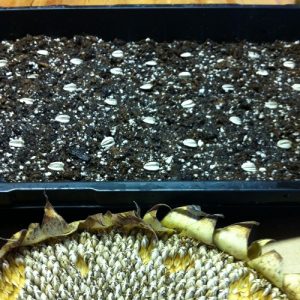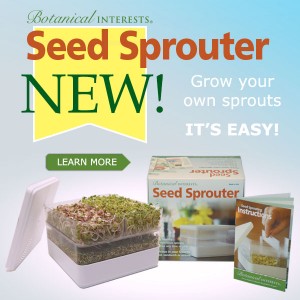

Researchers, health enthusiasts, and newcomers on the path of nutritional excellence have focused their attention on the benefit of sprouts or otherwise called “microgreens”. Microgreens are another name for the earliest form of greens produced during the initial stages of a plant. The cotyledons are the first set of leaves that emerge from a seed and the true leaves are the second set of leaves that emerge, which are more characteristic of a plant’s appearance. These two terms will be important when we get to the harvest stage of this food source.
As general rule, the younger a plant’s leaves are the more nutrients they contain. Consider the growth of a plant as it moves through its lifecycle. After emerging from the seed, photosynthesized sunlight or the plant’s energy is directed toward rapid leaf growth. Sunlight is concentrated in the smaller set of leaves which will subsequently become a larger set, and so on up the stem (with the exception of cotyledons). Therefore, the most energy is placed into the growth of the youngest set of leaves to successively produce larger ones.
With that in mind, microgreens are the fastest growing, youngest, and most nutrient dense leaves of a plant’s lifecycle. It’s no wonder there has been focus on raising plants to this stage and reaping an early harvest. On the homestead, it’s always important to consider the seed needed for the next growing season first, then consider retaining seed for sprouting.
With sunflowers – especially the Mammoth Sunflower variety, seed produced by the flower is particularly robust. The exponential seed output from one seed is an incredible display of the Creator’s abundant grace of giving. One seed grows into a massive flower in which the center spirals in a Fibonacci sequence into a gorgeous, plentiful source of seed. The seed from this source plant is particularly beneficial to your health. Here’s why:
-
Sunflower sprouts are rich in biophotons, which are the smallest units of light, which are stored in the tissue of young plants. The sun’s light energy is transferred from the plant to you.
-
Sunflower sprouts are a complete protein, which is a protein that contains all the essential amino acids, which provide the cell with enzymes to perform vital functions, including tissue repair.
-
Sprouted sunflower greens contain up to 100 times more nutrients than their full grown counterparts. The body assimilates these phytonutrients, vitamins, and minerals much faster.
-
Antioxidant levels in sprouted sunflower seeds are very high which support cellular recovery, promote heart health, and slow aging. Vitamins C, E, and selenium improve arterial health and reduce high blood pressure.
-
Sunflower sprouts contain potent levels of magnesium that support healthy cardiovascular, nervous, and immune systems. And, magnesium promotes a healthy mood!
-
The ample amount of zinc in sunflower greens boost reproductive health and works with over 300 enzymes to help your body function properly.
-
Sprouted sunflowers seeds are packed full of essential fatty acids which are needed for the seedling to push out of the shell. Sprouts contain up to 900% more nutrition that seeds alone!
To start your own Sunflower Seed Sprouts, find yourself a wide tray and spread with an even layer of your favorite organic potting mix. Place your Mammoth Sunflower Seed about two inches apart in rows two inches apart. (Remember, you are growing the plant for the sprouts only. Traditional spacing would be much wider.) Cover the seeds with a 1/2 of additional potting mix and water evenly. Check the soil daily. If its dry, water the tray evenly. Keep in a sunny window or under fluorescent lighting.
Happy sprouting!

